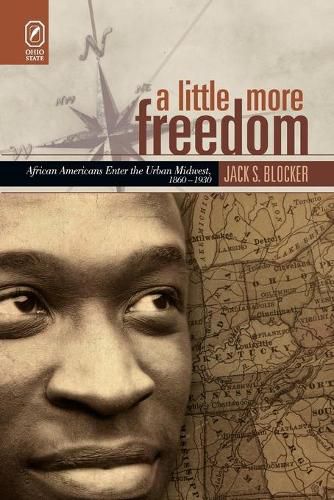Readings Newsletter
Become a Readings Member to make your shopping experience even easier.
Sign in or sign up for free!
You’re not far away from qualifying for FREE standard shipping within Australia
You’ve qualified for FREE standard shipping within Australia
The cart is loading…






This title is printed to order. This book may have been self-published. If so, we cannot guarantee the quality of the content. In the main most books will have gone through the editing process however some may not. We therefore suggest that you be aware of this before ordering this book. If in doubt check either the author or publisher’s details as we are unable to accept any returns unless they are faulty. Please contact us if you have any questions.
Why did African Americans move from the rural South to the metropolitan North? Scholars have shown that African Americans took part in the urbanization of American society between the Civil War and the Great Depression, but the racial dimensions of their migration have remained unclear. A Little More Freedom is the first study to trace African American locational choices during the crucial period when migrants created pathways that would shape mobility through the twentieth century and beyond.This book identifies an age of the village for black Midwesterners, when Civil War and postwar migrants distributed themselves evenly across the urban hierarchies of the region. Using four case studies of Washington Court House, Ohio; Springfield, Ohio; Springfield, Illinois; and Muncie, Indiana, Blocker shows what life was like for African Americans in small towns and small cities, thus illuminating the reasons why most blacks ultimately chose to leave such places in favor of metropolitan centers such as Chicago, Indianapolis, and Cleveland. Previous scholars have emphasized the role of racist white violence as the catalyst, but A Little More Freedom takes a more nuanced approach.Emphasis upon racist violence and Jim Crow has inadvertently tended to portray African Americans as victims and their migrations as flight from danger and oppression. While not downplaying white racism, A Little More Freedom tries to recreate the threats and opportunities in urban places of different sizes as seen through the eyes of migrants.
$9.00 standard shipping within Australia
FREE standard shipping within Australia for orders over $100.00
Express & International shipping calculated at checkout
This title is printed to order. This book may have been self-published. If so, we cannot guarantee the quality of the content. In the main most books will have gone through the editing process however some may not. We therefore suggest that you be aware of this before ordering this book. If in doubt check either the author or publisher’s details as we are unable to accept any returns unless they are faulty. Please contact us if you have any questions.
Why did African Americans move from the rural South to the metropolitan North? Scholars have shown that African Americans took part in the urbanization of American society between the Civil War and the Great Depression, but the racial dimensions of their migration have remained unclear. A Little More Freedom is the first study to trace African American locational choices during the crucial period when migrants created pathways that would shape mobility through the twentieth century and beyond.This book identifies an age of the village for black Midwesterners, when Civil War and postwar migrants distributed themselves evenly across the urban hierarchies of the region. Using four case studies of Washington Court House, Ohio; Springfield, Ohio; Springfield, Illinois; and Muncie, Indiana, Blocker shows what life was like for African Americans in small towns and small cities, thus illuminating the reasons why most blacks ultimately chose to leave such places in favor of metropolitan centers such as Chicago, Indianapolis, and Cleveland. Previous scholars have emphasized the role of racist white violence as the catalyst, but A Little More Freedom takes a more nuanced approach.Emphasis upon racist violence and Jim Crow has inadvertently tended to portray African Americans as victims and their migrations as flight from danger and oppression. While not downplaying white racism, A Little More Freedom tries to recreate the threats and opportunities in urban places of different sizes as seen through the eyes of migrants.